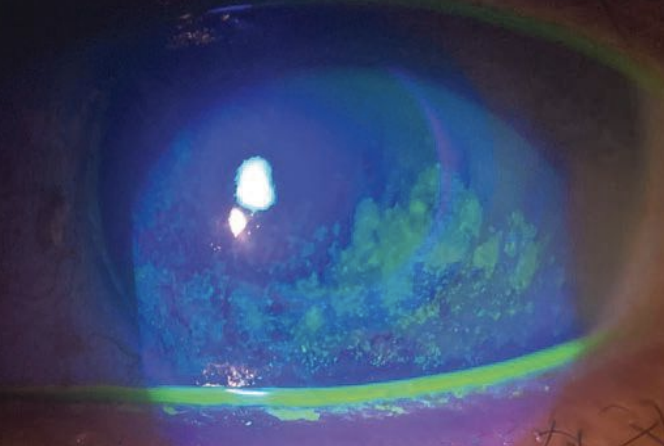 |
|
A new software-based tool may help ODs and MDs diagnose dry eye quicker and with greater accuracy. Photo: Pam Theriot, OD. Click image to enlarge. |
It’s often challenging for doctors to discover the root cause of a patient’s dry eye, as there is a long list of potential explanations for their ocular dryness or inflammation. In addition to determining the cause, it’s also necessary to identify the severity of the signs or symptoms in patients suffering from dry eye disease (DED) to be able to prescribe the most appropriate treatment. Yet, no standard criteria exist for grading the severity of the condition. To help simplify the process of diagnosing and determining the severity of DED, researchers recently developed and tested a clinical decision support system. Their results showed that the system helped ophthalmologists diagnose disease more quickly and accurately than traditional methods.
The two-phase study began with a questionnaire designed to identify the most important diagnostic parameters from the perspectives of 37 cornea specialists. The second phase of the study involved the design of the clinical decision support system using MATLAB software, which included the seven parameters that were deemed most important (Table 1). Then, using data from 50 patients at a teaching hospital, the researchers evaluated the system’s ability to accurately diagnose DED.
They found that the accuracy, sensitivity and specificity values of the system were 96.9%, 97.5% and 93.7%, respectively. They also determined that its performance showed a very good level of agreement with specialists’ diagnoses, achieving a K value of 89.7% on a Kappa statistical test.
The researchers noted in their paper, “In general, it can be concluded that the system designed in the present study showed good performance, and it can be easily used in the clinical environment to diagnose dry eye disease and its severity.” Eventually, the system may also become a more accessible diagnostic tool if moved to an online platform.
“Although the system developed in the present study was not a web-based system, it could be easily used offline by the users and can be improved to a web-based system in the future,” the researchers wrote. They pointed out in their paper that larger studies are warranted to further validate the system’s performance as a diagnostic aid for dry eye.
Table 1. Parameters of the Clinical Decision Support System For DED Diagnosis
Necessary Parameters | Value | Severity of Dry Eye |
Ocular Surface Disease Index score | 13-22 23-32 33-45 >45 | Mild Moderate Severe Very severe |
Filamentary keratitis | Negative Positive | Depending on other parameters (mild, moderate) Depending on other parameters (severe, very severe) |
Meibomian gland dysfunction | Mild Moderate Severe Very severe | Mild Moderate Severe Very severe |
Schirmer’s test result (mm) | 7-10 5-6 3-4 <3 | Mild Moderate Severe Very severe |
Tear meniscus height (mm) | 0.2 0.1 <0.1 | Mild Moderate Depending on other parameters (severe, very severe) |
Tear breakup time (seconds) | 7-10 5-6 3-4 <3 | Mild Moderate Severe Very severe |
Fluorescein staining score | 2 3 4 5 | Mild Moderate Severe Very severe |
Ebrahimi F, Ayatollahi H, Aghaei H. A clinical decision support system for diagnosing and determining severity of dry eye disease. Eye (Lond). August 22, 2022. [Epub ahead of print]. |


